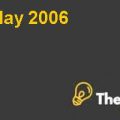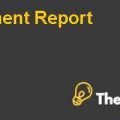What qualitative and quantitative assumptions underlie the $9 billion market valuation for LinkedIn as of the end of July 7, 2011? What is your assessment of those assumptions?
The valuation of LinkedIn by major investment companies such as JP Morgan is different from each other in different ways such as what assumptions they have taken while valuing the LinkedIn Corporation or what comparable they have used to value the LinkedIn Corporation.
By using three methods, the valuation of LinkedIn Corporation can be done.
Fires method can be by looking at the peer organizations who are publicly trading their shares such as XING.
The second method can be by using the comparables while valuing the LinkedIn Corporation.
The third method can be by looking at organizations who are publicly trading, those organizations are not the peers but those have some impact on the valuation of LinkedIn.
If we talk about the valuation by JP Morgan, it had made the report one month back and according to its valuation LinkedIn sock is overweight and it has calculated the target price of $85 assuming the issue price of $76.38.
It hasalso assumed the compound annual growth of the revenues i.e. 55% that is more than the compound annual growth that we used to find the share price of LinkedIn.
It had assumed the cost of capital of10.5% with the terminal growth rate of 6%.
Morgan Stanley had the same recommendation as of JP Morgan.
Capstone securities had given the recommendation of selling LinkedIn stock with the target price of $45, this is the huge difference as compared to the valuation of other investment companies.
It hasrecommended that this stock is overvalued, it valued the share price at $45 with the issue price of $94.
It has used the assumption of 46% compound annual growth rate with the 21.4% EBITDA margin in 2013.
Ratio Analysis
To access the PRE-IPO financial performance and compare it with the XIANG, I have done ratio analysis.
Profitability Ratios:
Profitability ratios determine the capability of the company to generate earnings with the comparison of its expenses. We can analyze the profitability position of the company by calculating gross profit and a net profit ratio of the company.The reported gross profit margin and net profit margin of LinkedIn were 78.48% and -3.31% respectively in the year 2009 while in 2010 they have improved to 81.56% and 6.33% respectively.
On the other hand, the reported gross profit margin and net profit margin of XING were 99.90% and -3.73% respectively in the year 2009 while in 2010 they hadimproved to 100% company did not have thecost of revenue and net income margin improved to 13.28%.In terms of profitability ratio, XING has good financial performance as compared to LinkedIn.The profitability performance of the company reveals that the company effectively controls its expenses thus, this improves the overall earning position of the company...............
This is just a sample partial work. Please place the order on the website to get your own originally done case solution.











